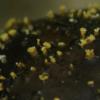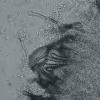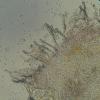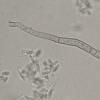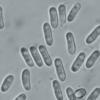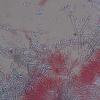
24-03-2024 08:27
 Thierry Blondelle
Thierry Blondelle
HiOn Hedera helix fallen branchEcological habitat:

26-04-2024 10:07
 Mathias Hass
Mathias Hass
Hello, Does anyone know what this is? Found on J

24-04-2024 21:54
Bonjour, J'ai trouvé ce Lasiobolus sur laissées

23-04-2024 15:18
 Lothar Krieglsteiner
Lothar Krieglsteiner
... but likely a basidiomycete. I hope it is o.k.

23-04-2024 13:17
 Edouard Evangelisti
Edouard Evangelisti
Bonjour à tous, Je viens de récolter ce que je

23-04-2024 21:49
Ethan CrensonHello all, A friend recently found this orange as

22-04-2024 11:52
 Zuzana Sochorová (Egertová)
Zuzana Sochorová (Egertová)
Hello,I made a loan of a collection of Microstoma

11-01-2022 16:36
Hi does anyone have a digital copy of Raitviir A (

22-04-2024 20:38
 Miguel Ángel Ribes
Miguel Ángel Ribes
Good afternoon.Does anyone know this anamorph?It g
 Hi, I found an interesting ascomycete on the skin of an olive fruit lying on humid ground. According to my interpretation there is a core of profusely branched, yellow, pennillate conidiophores (phialides, etc) overtoped by distinct, broad, cylindrical, septate, very curved paraphysis with the last elemnt slightly swollen. Conidia cylindrical with rounded heads . Some interesting features:
Hi, I found an interesting ascomycete on the skin of an olive fruit lying on humid ground. According to my interpretation there is a core of profusely branched, yellow, pennillate conidiophores (phialides, etc) overtoped by distinct, broad, cylindrical, septate, very curved paraphysis with the last elemnt slightly swollen. Conidia cylindrical with rounded heads . Some interesting features: 1. Large amounts of conidiospores measuring (6)7-8(9) x 2-3 um, cylindrical and slightly curved with rounded ends
2. Numerous snake-like (curved) paraphyses, 2-3 septate, clavate with very rough (densely verrucose) walls
3. Dense and x2 (or more) branched penicillate conidiophores that are much shorter from the paraphyses
4. Structural cells with deep yellow pigment, more or less subsphericall
These fruiting bodies are erupting from the fruit's pulp (not superficial)
Spores' size:
(6.1) 6.8 - 8.5 (9.1) × (2.2) 2.3 - 2.8 (2.9) µm
Q = (2.2) 2.5 - 3.5 (3.9) ; N=27
V = (18) 21 - 33 (38) µm3
Me = 7.7 × 2.5 µm ; Qe = 3 ; Ve = 26 µm3
My first thought is Actinostilbe sp.
Mirek

https://grzyby-pk.pl/gat_a/gat_actinostilbe_20200830.php
it is the same one , cant find anything different between the two!!!
But why just Actinostilbe sp. ? There are a lot of spp. ? Anyway you gave me the right track - I take over to do some research on the genus
THANK YOU
Stephen.
"SP" because it is an indescribable species and unfortunately it will probably remain nameless for a long time. Christian examined him and was going to publish, but fate did not allow him :(
Regards
Mirek

We keep in touch Mirek !

I managed to get a pure colony and sequence this fungus and the results where Sarcopodium vanillae - 99.39% Sarcopodium vanillae MK685870
Should I assign this finding to this species or maybe it is not convincing (morphology matches ?)
Paper mentioning this collection with details on the anamorph and sexual state
https://www.researchgate.net/publication/338936119_First_sexual_morph_record_of_Sarcopodium_vanillae#fullTextFileContent
I wonder what are your thoughts (overall it matches)


